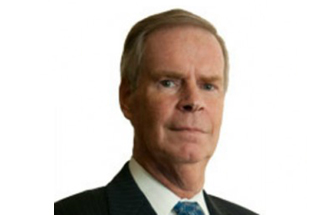
OMB priming HR shared services for a big year
New data from the administration shows 13 milestones for administrative shared services, including seven for human resources, in 2016.
The Office of Management and Budget is rebooting the human resources line of business effort after it laid basically dormant — or maybe just really quiet — for the last several years.
The recent update on shared services on Performance.gov for the fourth quarter of fiscal 2015 highlights the expectations for a big year for HR, financial management and possibly other cross-administrative functions.
Dave Mader, OMB’s controller, put a finer point on this effort at a recent Association of Government Accountants event when he said that shared services is at a critical point.
“We now have in place a governmentwide strategy and approach. We’ve created new governance models. We’ve created some additional oversight and implementation organizations that the General Services Administration has now initiated that will allow us to move forward over the next couple of years,” Mader said. “The progress we’ve made over the last several years really serves as foundation for how the government can improve the delivery of services not only internally, but more importantly to the citizens.”
The foundation Mader is talking about is partly from the new Unified Shared Service Management Team, which GSA manages and OMB announced in October along with a new customer council. Additionally, the culture change seems to be happening as agencies quickly realize that for at least certain back-office functions, continuing to run their own services is no longer the best option.
OMB kicked off a study in March 2015 looking at a host of administrative shared services, including financial management, human resources, acquisition and technology.
Beth Angermann, the director of the new management team, said the new approach is more inclusive and horizontal in how it’s aligning resources with needs.
To that end, OMB listed 13 milestones for 2016, including deciding whether an independent verification and validation (IV&V) support service would be good for shared services implementations, and updating version 3 of the financial management catalog with service-level agreement performance measures.
Mader said OMB is facing more demand than supply when it comes to financial management shared services.
“We have a good notion of what supply is between now and 2018-2019,” he said. “We are looking at the supply and demand bubble, and over the course of the year we will make some decisions on how to meet that demand. We don’t want agencies reverting back to modernizing their own systems.”
For the human resources line of business, OMB has laid out half of the milestones. Among the most significant objectives are creating governmentwide time and attendance business requirements and employee performance management business requirements.
OMB, working with the Office of Personnel Management as the initiative’s managing partner, will develop a governmentwide human resources IT systems catalog and implement a future vision for a consolidated framework for HR LOB performance management measurement and oversight.
“One of the things we know we need to do because we are seeing increased demand for HR services, not so much even for the system, but support for position classifications, for hiring, for personnel actions and those types of things, we need to actually understand where that demand is, how we actually frame what those services are that align very much to what the financial side did with the catalog,” Angermann said at the AGA event. “Can we define HR services similarly so that we know based upon what we should be designated an HR service marketplace as well?”
David Vargas, the director of the HR line of business at OPM, said the Chief Human Capital Officer’s Council is looking at the entire HR lifecycle — from strategy to hire to separation — not just core IT services.
“They are looking for access to data, systems that talk to one another and an entire lifecycle that allows them to do their job effectively and efficiently,” he said.
Currently, OMB says almost 74 percent of all agencies are using shared services for core human resources functions, which is up from 57 percent in 2003.
Vargas said the three of the four payroll providers — the Agriculture Department’s National Finance Center, the Interior Department’s Interior Business Center, the Defense Finance and Accounting Service and the General Services Administration — are looking to expand their HR services. GSA said nearly two years ago that it was getting out of the payroll and HR business, but it hasn’t completed its move to NFC yet.
He said Treasury’s Administrative Resource Center also provides core HR services, but not payroll, and the Department of Health and Human Services Program Support Service is considering its role in this shared services market.
OMB detailed six agency current or future efforts to migrate to HR shared services. The Justice Department, for example, ran a pilot in 2015 to use the PeopleSoft system run by NFC.
The Veterans Affairs Department has deployed two services in 2015 with IBM’s shared service center and is considering four other deployments in 2016.
The upcoming fiscal 2017 budget request should further clarify OMB’s plans, particularly around funding. Angermann said the governance group is trying to deal with the inconsistent interpretation of some of the authorities these shared services providers have to operate — some have a working capital or revolving fund, while others don’t have the ability to charge more for the services they provide to help pay for future upgrades or expansion of services.
But without this change to the funding model for the shared services provider, the success of the rest of these efforts will be severely limited.
Return to the Reporter’s Notebook.
Copyright © 2025 Federal News Network. All rights reserved. This website is not intended for users located within the European Economic Area.
Jason Miller is executive editor of Federal News Network and directs news coverage on the people, policy and programs of the federal government.
Follow @jmillerWFED




